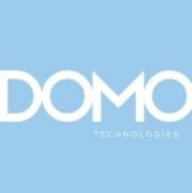

Find out in this report how the two Cloud Data Warehouse solutions compare in terms of features, pricing, service and support, easy of deployment, and ROI.
When it comes to big data processing, I prefer Databricks over other solutions.
For a lot of different tasks, including machine learning, it is a nice solution.
Whenever we reach out, they respond promptly.
While they eventually provide the correct answers, their support for smaller customers could be improved.
The patches have sometimes caused issues leading to our jobs being paused for about six hours.
Sigma, which is written for Snowflake, scales more easily than Domo.
They release patches that sometimes break our code.
Cluster failure is one of the biggest weaknesses I notice in our Databricks.
We prefer using a small to mid-sized cluster for many jobs to keep costs low, but this sometimes doesn't support our operations properly.
If I could right-click to copy absolute paths or to read files directly into a data frame, it would standardize and simplify the process.
We use MLflow for managing MLOps, however, further improvement would be beneficial, especially for large language models and related tools.
End users require a license to run their own reports and dashboards, which are fairly expensive.
Domo is expensive compared to other solutions.
Databricks' capability to process data in parallel enhances data processing speed.
Developers can share their notebooks. Git and Azure DevOps integration on the Databricks side is also very helpful.
I have been using it for four years and have been able to extract the information I need from it.


Databricks is utilized for advanced analytics, big data processing, machine learning models, ETL operations, data engineering, streaming analytics, and integrating multiple data sources.
Organizations leverage Databricks for predictive analysis, data pipelines, data science, and unifying data architectures. It is also used for consulting projects, financial reporting, and creating APIs. Industries like insurance, retail, manufacturing, and pharmaceuticals use Databricks for data management and analytics due to its user-friendly interface, built-in machine learning libraries, support for multiple programming languages, scalability, and fast processing.
What are the key features of Databricks?
What are the benefits or ROI to look for in Databricks reviews?
Databricks is implemented in insurance for risk analysis and claims processing; in retail for customer analytics and inventory management; in manufacturing for predictive maintenance and supply chain optimization; and in pharmaceuticals for drug discovery and patient data analysis. Users value its scalability, machine learning support, collaboration tools, and Delta Lake performance but seek improvements in visualization, pricing, and integration with BI tools.
Domo is a cloud-based, mobile-first BI platform that helps companies drive more value from their data by helping organizations better integrate, interpret and use data to drive timely decision making and action across the business. The Domo platform enhances existing data warehouse and BI tools and allows users to build custom apps, automate data pipelines, and make data science accessible for anyone through automated insights that can be shared with internal or external stakeholders.
Find more information on The Business Cloud Here.
We monitor all Cloud Data Warehouse reviews to prevent fraudulent reviews and keep review quality high. We do not post reviews by company employees or direct competitors. We validate each review for authenticity via cross-reference with LinkedIn, and personal follow-up with the reviewer when necessary.